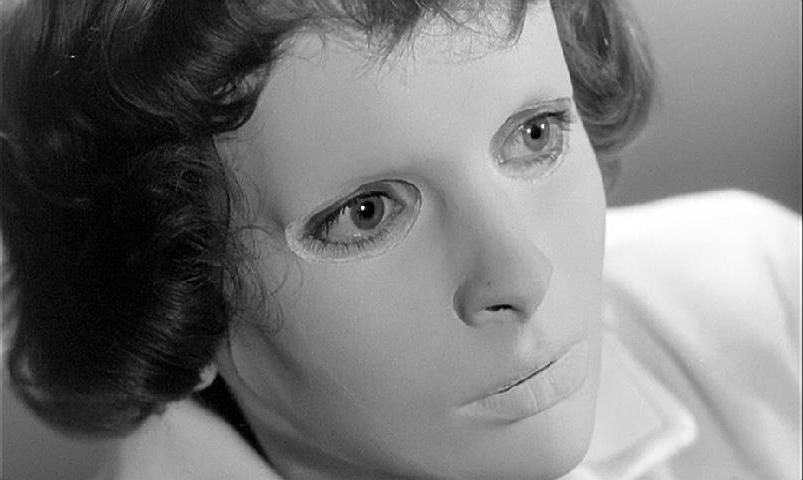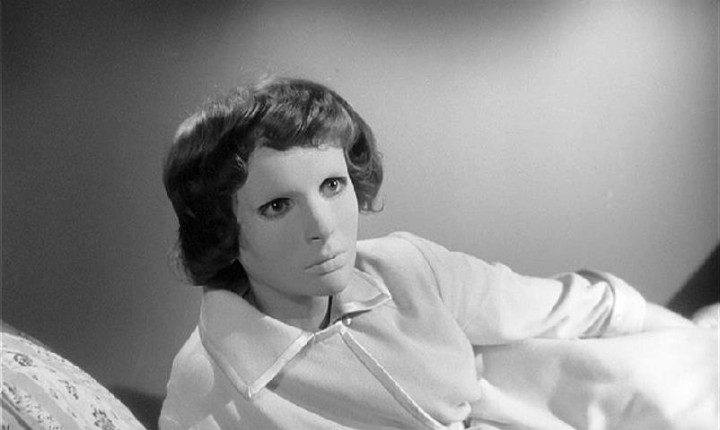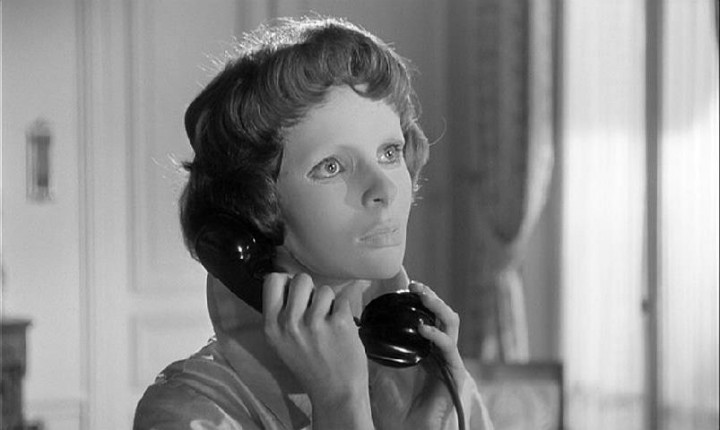I settled in to watch Georges Franju’s Eyes Without a Face (Les Yeux sans Visage) with an open mind. I have seen the 1960 film at least four times — starting in childhood with a Saturday matinee TV print (dubbed and trimmed of its minimal gore) — and have never gotten its greatness. This viewing did nothing to change that. I had hoped it might, but … no. Let me explain. I don’t think this is a bad movie by any means. It’s solidly made. The cinematography is good. There are flashes of the poetic in it. It was ahead of its time in the graphic horror department (tame though it looks now). But greatness? I’m still trying to find that. Frankly, I think it’s more important for what it influenced (I’m thinking of things like Almodovar’s The Skin I Live In and Leos Carax’s Holy Motors, not Billy Idol) than for what it is. In terms of plot — and theme, for that matter — Eyes Without a Face frankly strikes me as little more than a Bela Lugosi Monogrammer with better production values, an extra half hour, subtitles and no major horror star. In fact, it would not surprise me all that much to find it was influenced by Wallace Fox’s The Corpse Vanishes (1942), which it greatly resembles. This may only serve to prove what a Philistine I am.
The film follows the efforts of Dr. Génessier (Pierre Brasseur) to graft a new face onto his disfigured daughter, Christiane (Edith Scob). To this end, he and his assistant, Louise (Alida Valli), kidnap young women to surgically remove their faces for Christiane. As with just about any horror film of this nature, this works just about as well as you might think. At the time the film opens, an undetermined number of such experiments have been attempted and failed, leaving Christiane (whose face we never see) in the same state — only increasingly despondent over the whole situation. Not much happens that will surprise any horror fan. Eyes Without a Face follows a pretty standard template in that regard — the parade of failures, the body disposals, the suspicious fiancé, the police decoy, the cages of experiment subject dogs (and their eventual use), etc. is all boilerplate stuff.
So what makes Eyes Without a Face so highly regarded by so many? Apart from its often impressive imagery — some of which seems undercut to me by excessive footage of people moving from one place to another in often unnecessary detail — I think it all comes down to Edith Scob’s presence and that mask she wears. I don’t know that I think it’s a great performance exactly, but it’s remarkable. It’s also unforgettable in a way few things are. Her look, her movements, her sense of tragedy are indelible — not in the least because the brief time when we see her real face, it’s just about as passive and ethereal as the mask she wears for most of the film. It’s no exaggeration to say that the mask is iconic. It is at once beautiful and deeply unsettling. In this regard, at least, I believe the film deserves its praise, but I cannot get on board with the overall film as something truly remarkable. Horror fans, and film fans in general, should see for themselves.
The Thursday Horror Picture Show will screen Eyes Without a Face Thursday, April 24 at 8 p.m. in the Cinema Lounge at The Carolina Asheville and will be hosted by Xpress movie critics Ken Hanke and Justin Souther.







I too heard and read about how great this film was. And like so many other films when I finally saw it I was a bit disappointed. The overhype never serves a movie because I probably would have enjoyed it more if I hadn’t read the gushing praise. Still it is a good little horror film, though not anywhere near the league of Night of the Demon or Angel Heart or even the original The Thing. I’ve thought about it a bit and I think I know why it gets such praise. It’s not a US or Brit film. Films from non-english speaking countries are held to lower standards. Thus when a film from France or Italy is actually competent it gets much higher ratings than it would if it came from Hollywood. or Shepperton Studios where competency is actually expected.
I think you’re close, but missing the real foreign language point — it has subtitles and is therefore art, Our sense of cultural inferiority is always with us.
Now I’ve seen it with an audience and they mostly seemed to like, I still thought it was more okay than great, As a side observation my wife fell asleep.
Occam’s Razor. Your explanation is simpler and thus probably more correct.